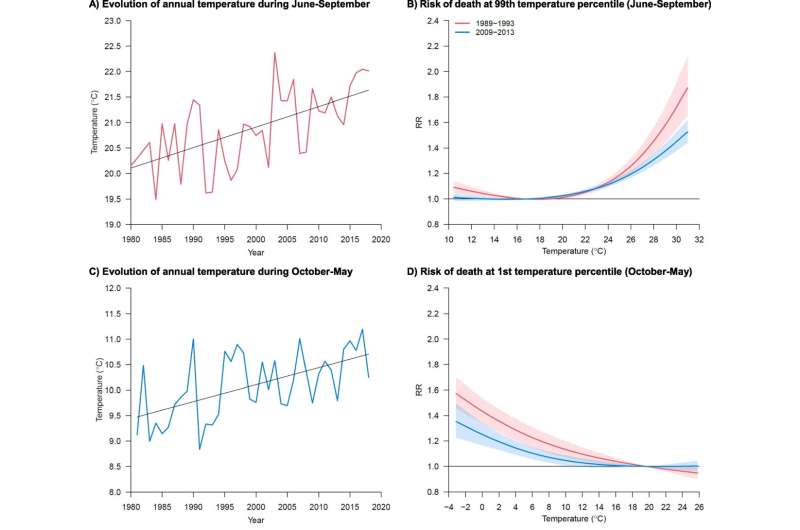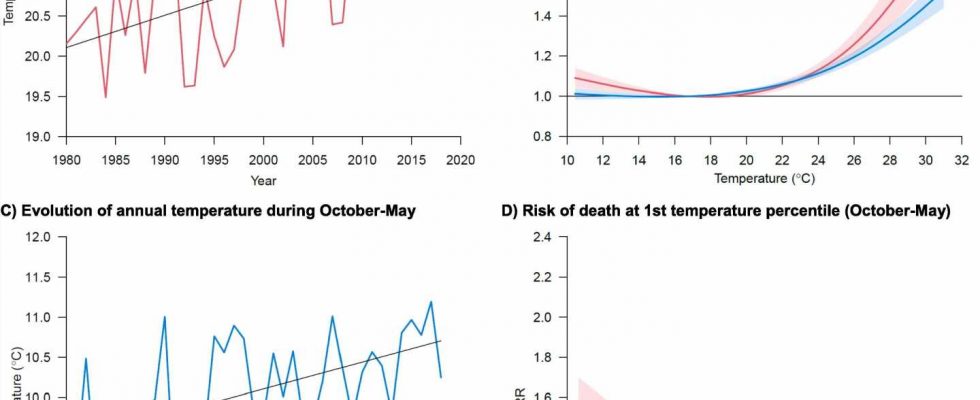
Air conditioning and heating systems have contributed considerably to reducing mortality linked to extreme temperatures in Spain, according to a study led by the Barcelona Institute for Global Health (ISGlobal).
The findings, published in Environment International, provide valuable insights for designing policies to adapt to climate change.
Rising temperatures but lower mortality
Spain, like many parts of the world, has experienced rising temperatures in recent decades, with the average annual mean temperature increasing at an average rate of 0.36°C per decade. The warming trend is even more pronounced in the summer months (0.40°C per decade). Surprisingly, this increase in temperature has coincided with a progressive reduction in mortality associated with heat. In addition, cold-related mortality has also decreased.
“Understanding the factors that reduce susceptibility to extreme temperatures is crucial to inform health adaptation policies and to combat the negative effects of climate change,” says the first author of the study, Hicham Achebak, a researcher at ISGlobal and Inserm (France) and holder of a Marie Sklodowska-Curie Postdoctoral Fellowship from the European Commission.
Effective societal adaptations
In this study, Achebak and colleagues analyzed the demographic and socioeconomic factors behind the observed reduction in heat and cold-related mortality despite rising temperatures. They found that the increase in air conditioning (AC) prevalence in Spain was associated with a reduction in heat-related mortality, while the rise in heating prevalence was associated with a decrease in cold-related mortality.
Specifically, AC was found to be responsible for about 28.6% of the decline in deaths due to heat and 31.5% of the decrease in deaths due to extreme heat between the late 1980s and the early 2010s. Heating systems contributed significantly, accounting for about 38.3% of the reduction in cold-related deaths and a substantial 50.8% decrease in extreme cold-related fatalities during the same period.
The decrease in mortality due to cold would have been larger had there not been a demographic shift towards a higher proportion of people aged over 65, who are more susceptible to cold temperatures.
The authors conclude that the reduction in heat-related mortality is largely the result of the country’s socioeconomic development over the study period rather than specific interventions such as heat-wave warning systems.
Four decades of data
For the statistical analysis, the research team collected data on daily mortality (all causes) and weather (temperature and relative humidity) for 48 provinces in mainland Spain and the Balearic Islands, between January 1980 and December 2018.
These data were then linked to 14 indicators of context (demographic and socioeconomic variables such as housing, income and education) for these populations over the same period.
Implications for climate adaptation
The results of the study extend previous findings on heat-related mortality in Spain and underscore the importance of air conditioning and heating as effective adaptation measures to mitigate the effects of heat and cold.
“However, we observed large disparities in the presence of AC across provinces. AC is still unaffordable for many Spanish households,” says Achebak.
The authors also point out that the widespread use of AC could further contribute to global warming depending on the source of electricity generation, which is why other cooling strategies, such as expanding green and blue spaces in cities, are also needed.
“Our findings have important implications for the development of adaptation strategies to climate change. They also inform future projections of the impact of climate change on human health,” concludes Joan Ballester, ISGlobal researcher and study coordinator.
More information:
Hicham Achebak et al, Drivers of the time-varying heat-cold-mortality association in Spain: A longitudinal observational study, Environment International (2023). DOI: 10.1016/j.envint.2023.108284
Journal information:
Environment International
Source: Read Full Article
